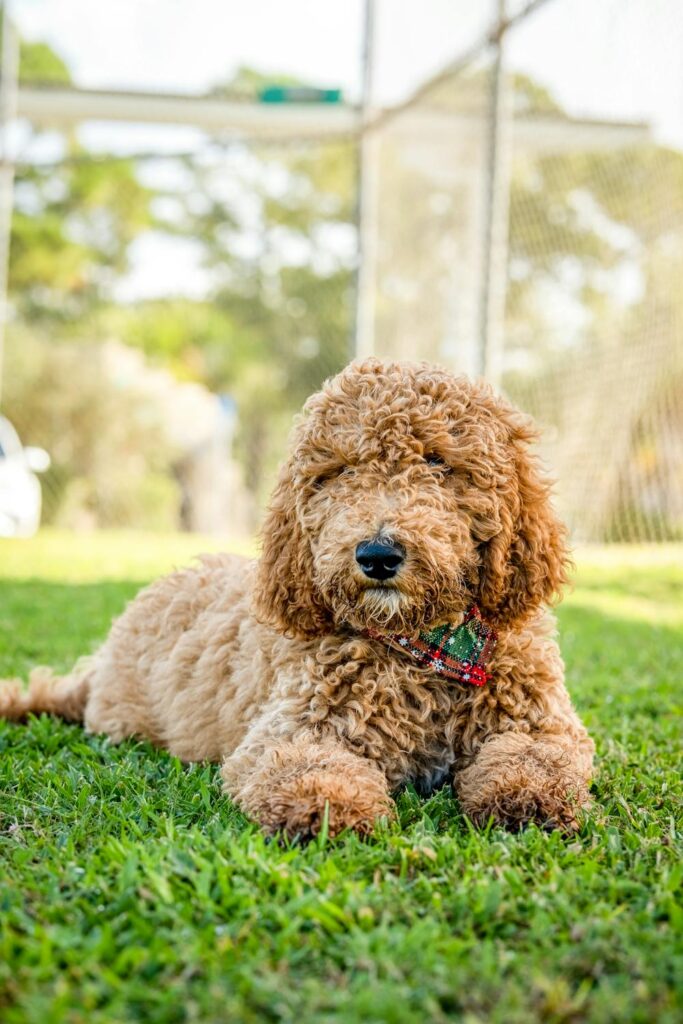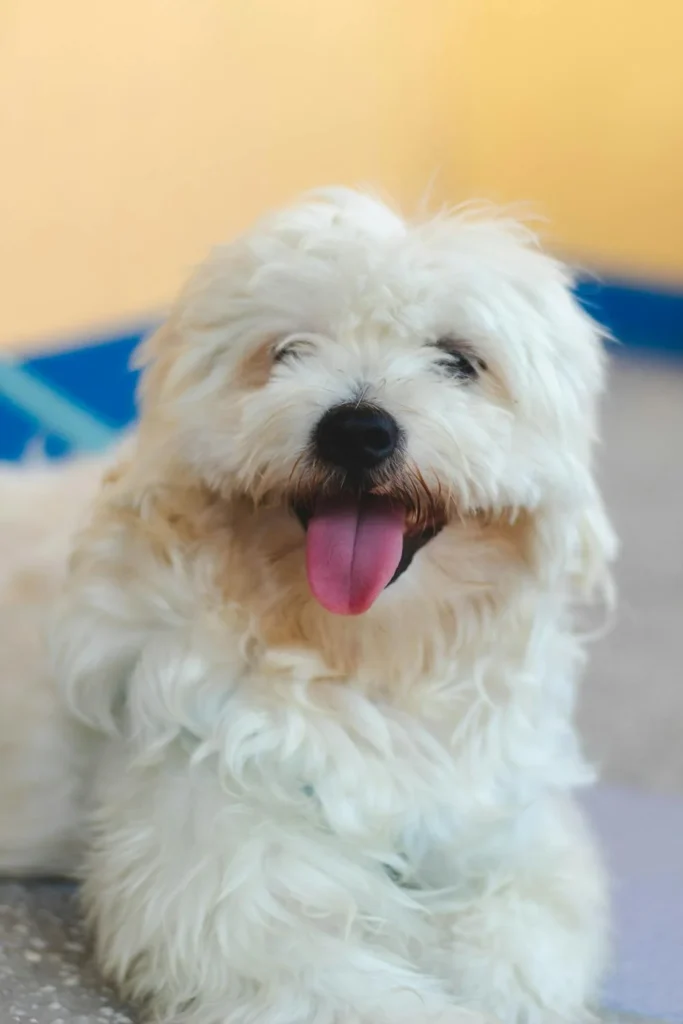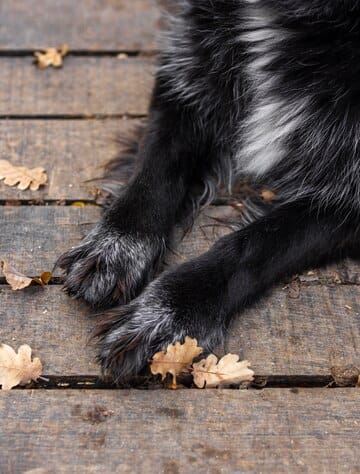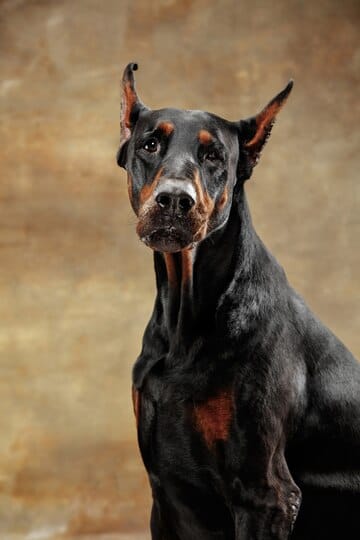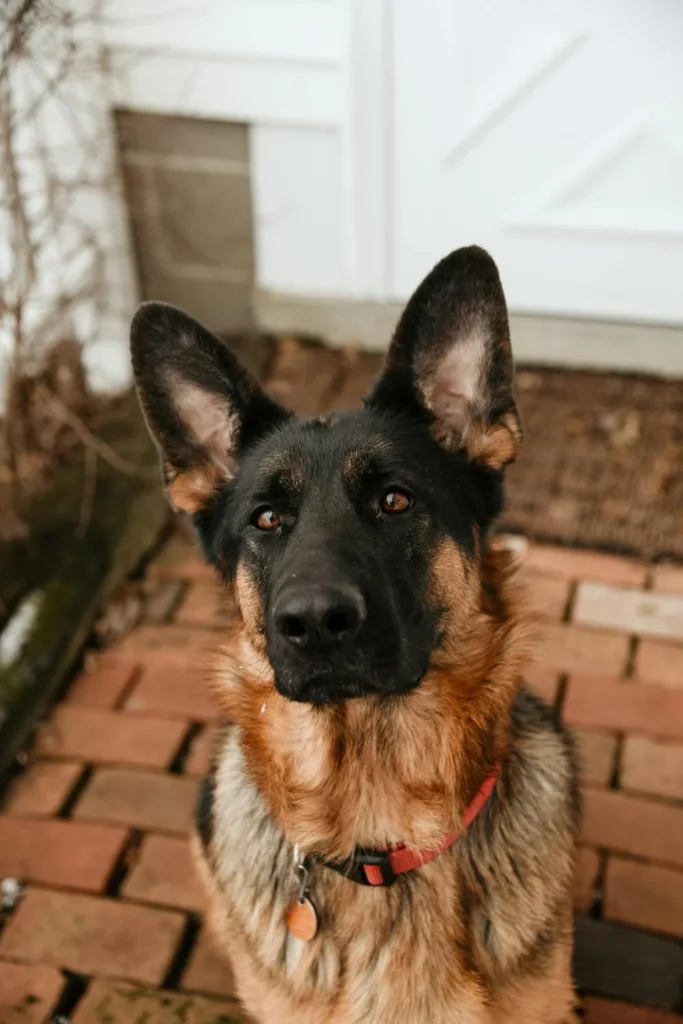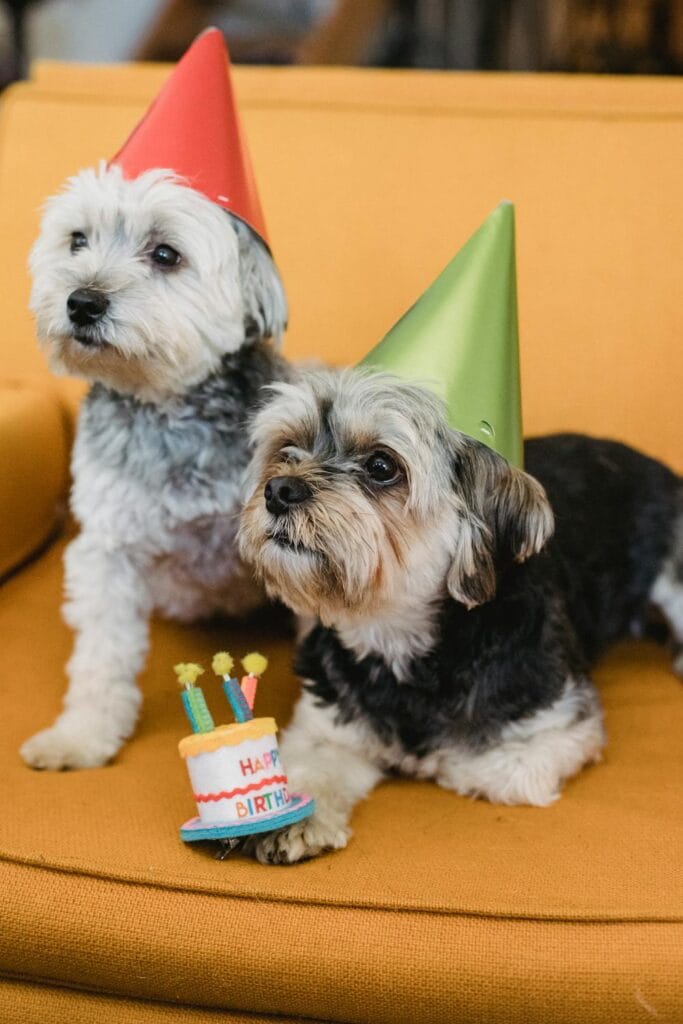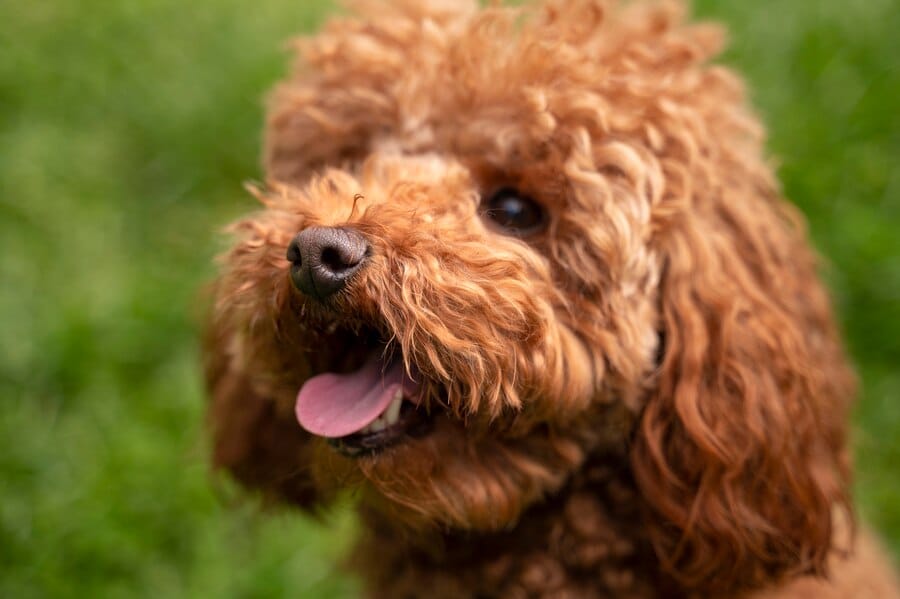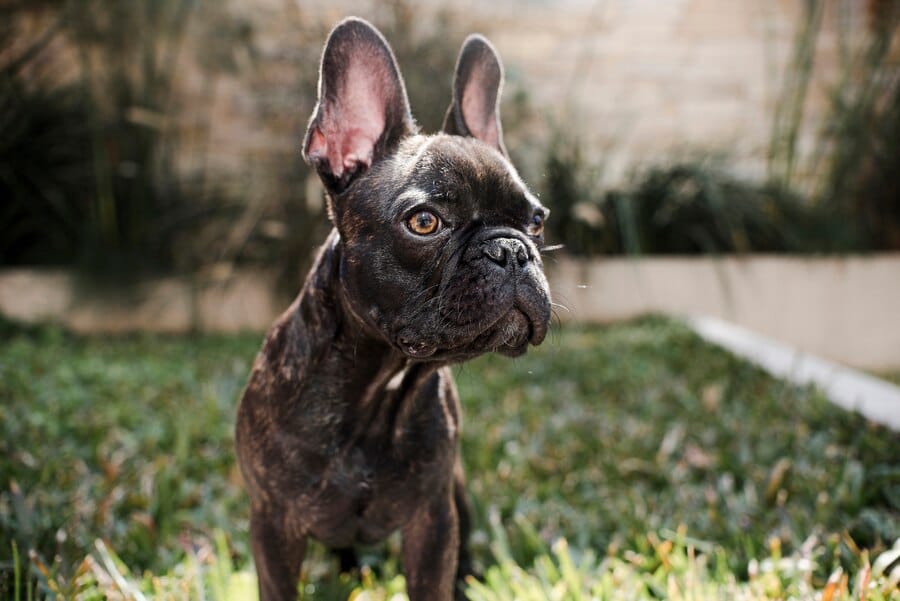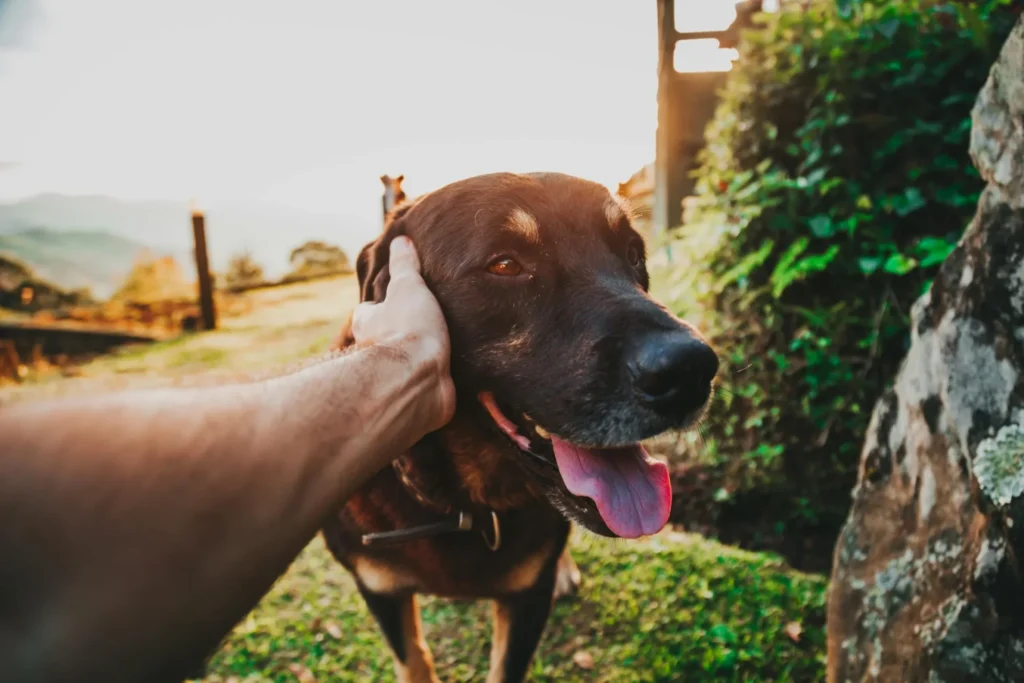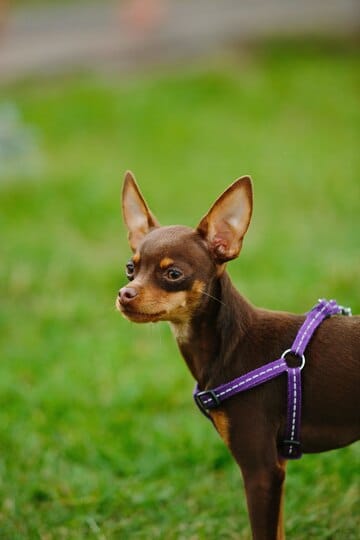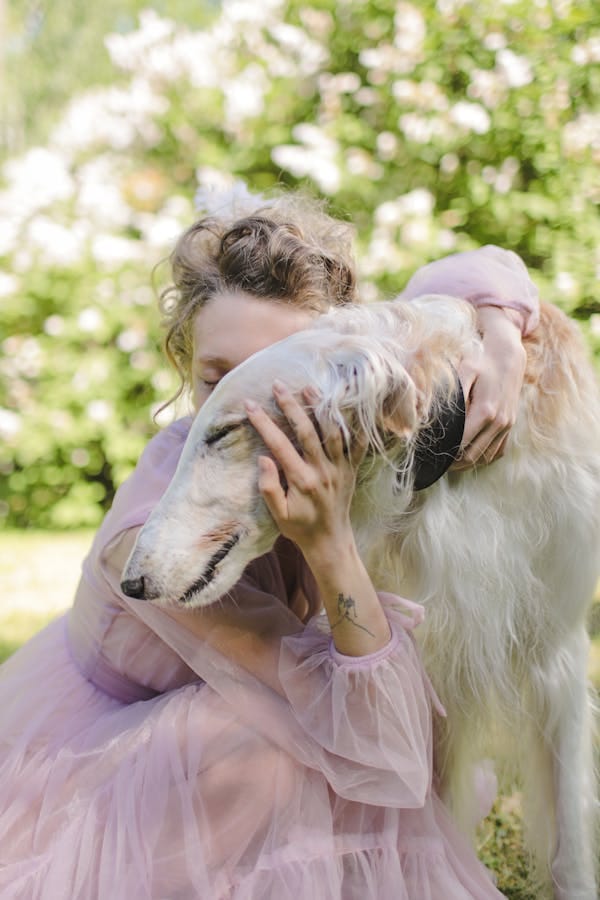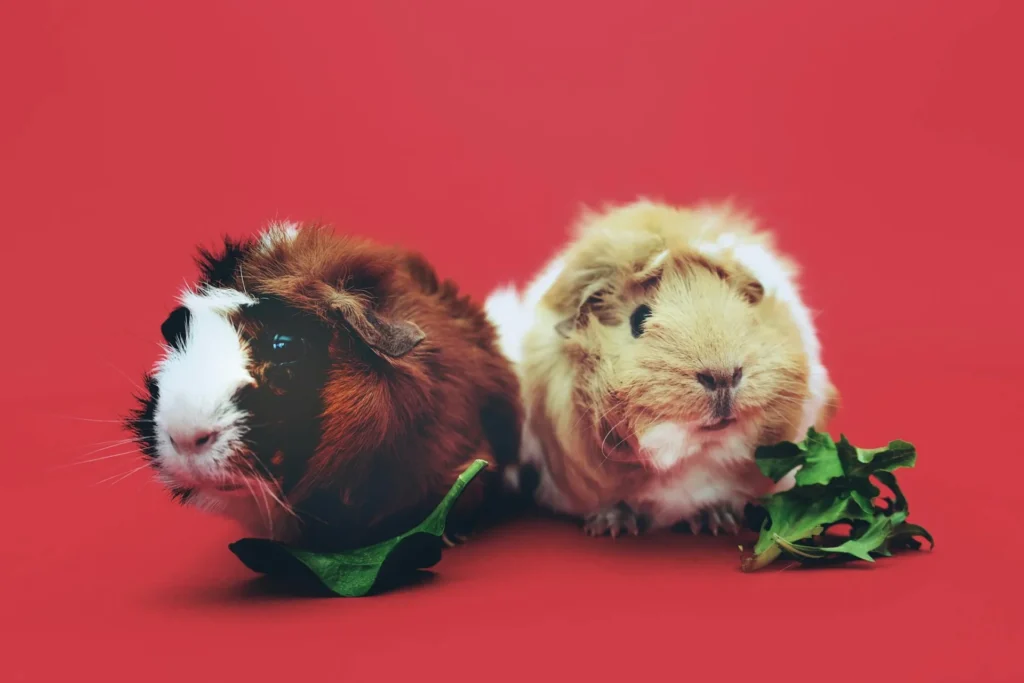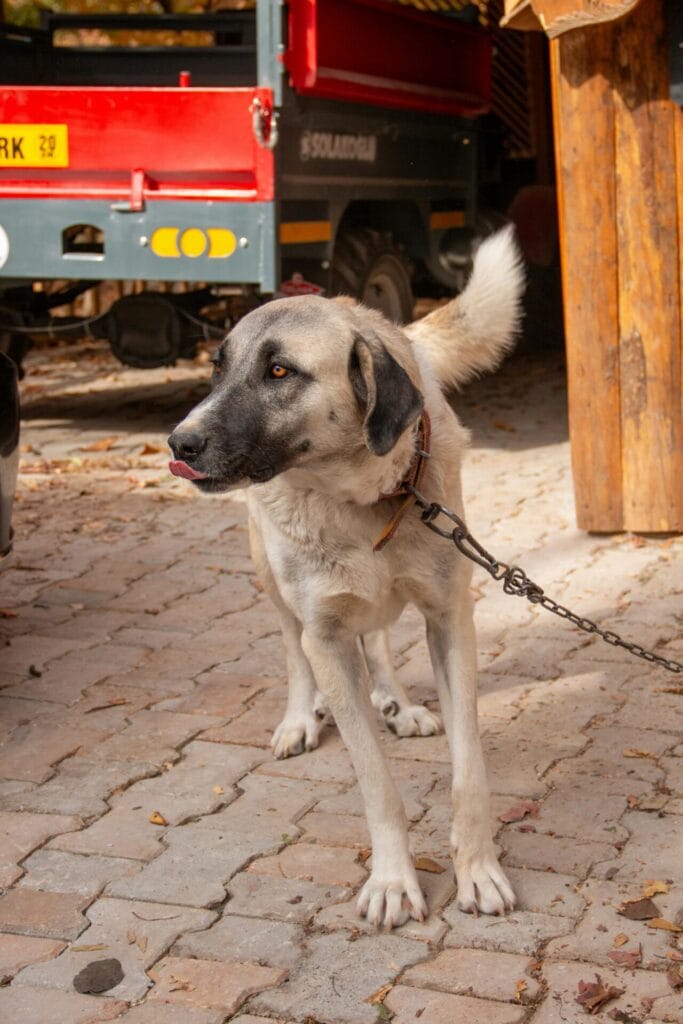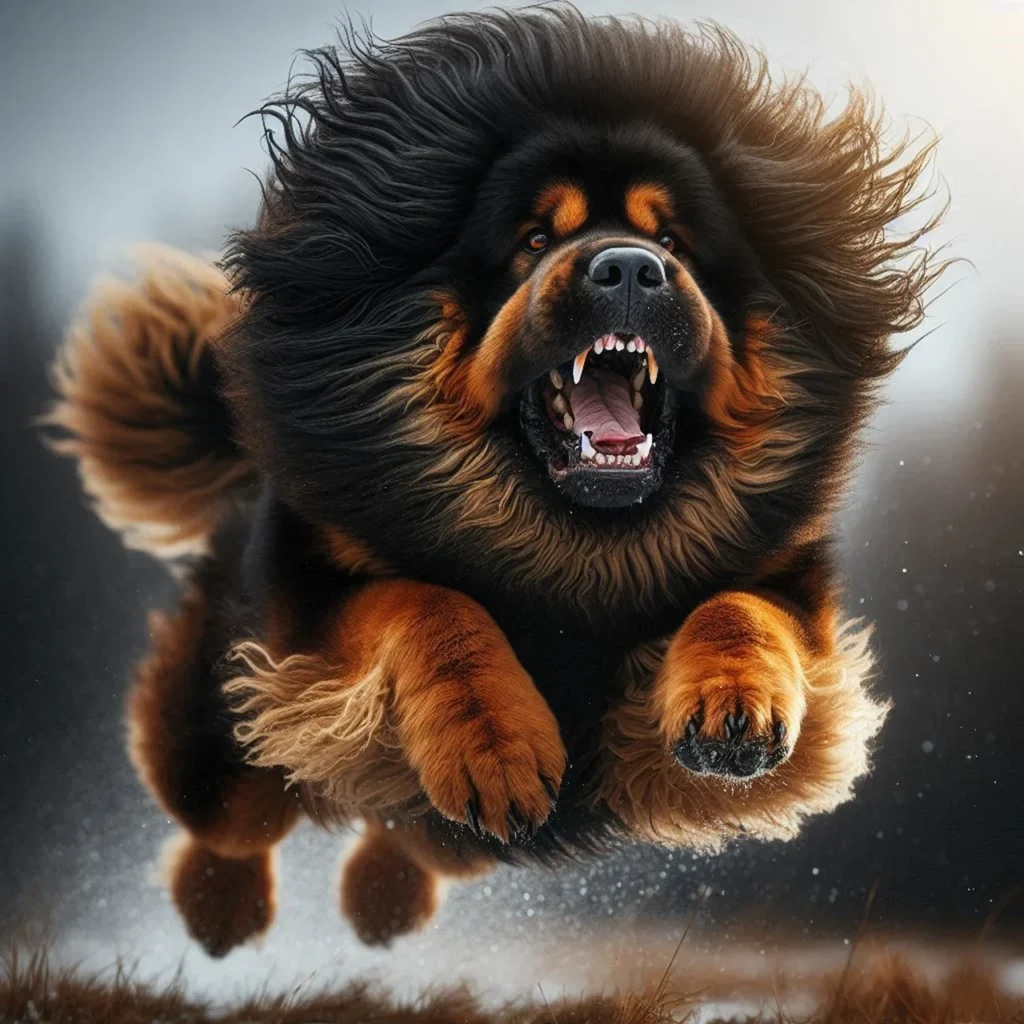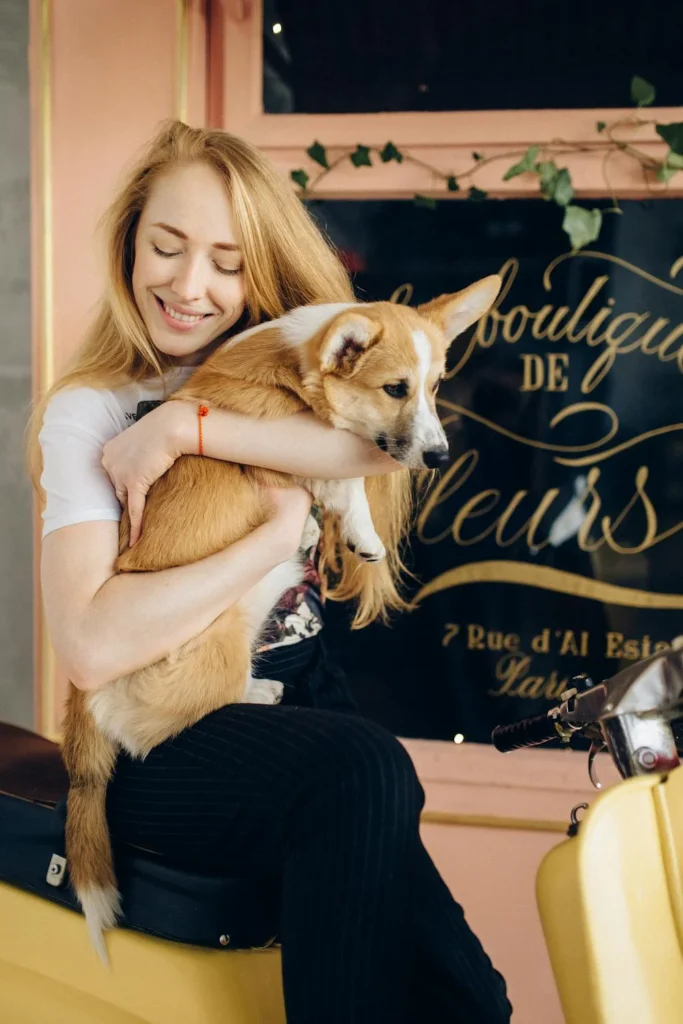- Introduction: The Poodle’s Path to Your Heart
- The Basics of Poodle Affection: Understanding Your Furry Friend’s Feelings 🐾
- How Poodles Show Affection: Decoding the Poodle Love Language 💌
- Do Poodles Like to Cuddle? The Truth About Poodle Snuggles 🤗
- Affection Across Poodle Varieties: Size Matters (Sometimes) 📏
- The Science Behind Poodle Affection: Love in the Canine Brain 🧠
- Poodles vs. Other Breeds: An Affection Comparison 🐕
- Factors Influencing Poodle Affection: Understanding Your Dog’s Love Language 💕
- Common Affection Problems and Solutions: Navigating Poodle Love Hurdles 🚧
- Nurturing the Bond: Tips for Fostering Affection with Your Poodle 💖
- FAQs: Your Poodle Affection Questions Answered 🤔
- Q1: Are male or female poodles more affectionate?
- Q2: My poodle doesn’t like to cuddle. Is something wrong?
- Q3: How can I make my poodle more affectionate?
- Q4: Do poodles become less affectionate with age?
- Q5: My poodle is overly affectionate with visitors. How can I manage this?
- Q6: Are toy poodles more affectionate than standard poodles?
- Q7: How do I know if my poodle loves me?
- Q8: Can poodles be affectionate with other pets?
- Q9: My rescue poodle isn’t affectionate. Will this change?
- Q10: Can I train my poodle to be more affectionate?
- Conclusion: Embracing the Poodle Love 💕
Introduction: The Poodle‘s Path to Your Heart
When it comes to canine companions, poodles stand out not just for their distinctive looks, but for their loving nature too. But how exactly do these curly-coated charmers express their affection? And do they really enjoy cuddling as much as we think they do? 🤔
In this comprehensive guide, we’ll dive deep into the world of poodle affection, exploring how these intelligent dogs show their love across all varieties – from the stately Standard to the tiny Toy. We’ll uncover the why, when, and how of poodle affection, compare them to other breeds, and even tackle some common cuddling conundrums. So, whether you’re a poodle parent or just poodle-curious, get ready for a heartwarming journey into the affectionate world of poodles! 💕
The Basics of Poodle Affection: Understanding Your Furry Friend’s Feelings 🐾
Before we dive into the specifics, let’s establish a foundation for understanding poodle affection. Poodles, like all dogs, are social animals with a deep-rooted need for companionship and affection. However, the way they express this can be as unique as their curly coats!

Why Poodles Show Affection
Poodles show affection for several reasons:
- Pack Mentality: Descended from wolves, dogs (including poodles) have a strong pack instinct. In a domestic setting, you’re their pack, and affection is a way to strengthen pack bonds.
- Positive Reinforcement: When poodles show affection and receive positive responses (petting, treats, praise), it reinforces the behavior.
- Comfort and Security: Affectionate behaviors often stem from a desire for comfort and security.
- Communication: For poodles, affection is a form of non-verbal communication, expressing everything from happiness to anxiety.
When Poodles Show Affection
Poodles may display affectionate behaviors:
- Upon your return home 🏠
- Before and after meals 🍽️
- During playtime 🎾
- When seeking attention or comfort 🤗
- Before bedtime 😴
- After a bath or grooming session 🛁
Understanding these basic motivations and timings can help you better interpret and respond to your poodle’s affectionate gestures.
How Poodles Show Affection: Decoding the Poodle Love Language 💌
Poodles have a rich repertoire of affectionate behaviors. Let’s explore some of the most common ways poodles express their love:
- Tail Wagging: A wagging tail, especially when the whole body wiggles, is a clear sign of joy and affection in poodles.
- Eye Contact: Poodles often make sustained eye contact with their loved ones, sometimes accompanied by a soft, relaxed expression.
- Leaning or Pressing Against You: This behavior, often called “the poodle lean,” is a way for your poodle to maximize physical contact.
- Following You Around: Poodles are often called “velcro dogs” for their tendency to shadow their favorite humans.
- Licking: Gentle licks, especially on the face or hands, are often signs of affection in poodles.
- Bringing You Toys: When your poodle brings you their favorite toy, it’s often an invitation to play and a sign of trust.
- Excited Greetings: Jumping, spinning, or vocalizing when you return home are all signs of a poodle’s affection.
- Sleeping Near You: Choosing to sleep close to you is a sign of trust and affection in poodles.
- Seeking Physical Contact: Whether it’s putting a paw on you or snuggling up close, poodles often seek physical touch as a form of affection.
- Facial Expressions: Poodles are expressive dogs. A relaxed, “smiling” face often indicates contentment and affection.
Do Poodles Like to Cuddle? The Truth About Poodle Snuggles 🤗
Now, let’s address the burning question: Do poodles like to cuddle? The short answer is yes, most poodles do enjoy cuddling! However, like humans, each poodle has its own personality and preferences when it comes to physical affection.
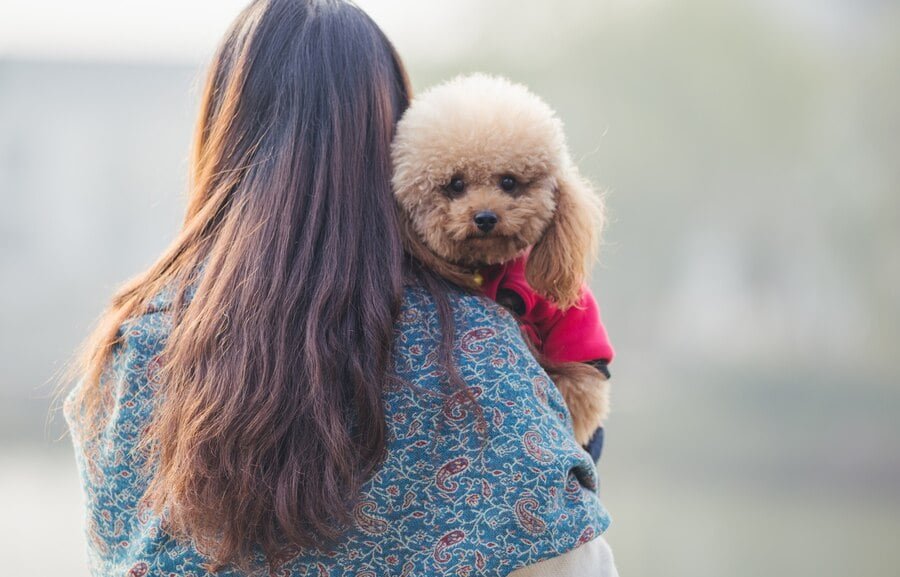
Cuddling Tendencies by Poodle Size
| Poodle Size | Cuddling Tendency | Notes |
|---|---|---|
| Standard | Moderate to High | May prefer leaning or sitting close rather than lap sitting |
| Miniature | High | Often enjoy lap sitting and close physical contact |
| Toy | Very High | Usually love lap sitting and being carried |
Remember, these are general tendencies. Individual poodles may vary in their cuddling preferences.
Factors Affecting a Poodle’s Cuddling Behavior
- Personality: Some poodles are naturally more affectionate than others.
- Upbringing: Early socialization can influence a poodle’s comfort with physical affection.
- Age: Older poodles may become more or less cuddly as they age.
- Health: Discomfort or illness can affect a poodle’s desire for physical contact.
- Environment: A poodle may seek more cuddles when feeling anxious or in new situations.
Signs Your Poodle Wants to Cuddle
- Pawing at you 🐾
- Climbing into your lap
- Leaning against you
- Bringing toys to your area
- Whining or making soft vocalizations while seeking contact
Signs Your Poodle May Not Want to Cuddle
- Turning away or avoiding eye contact
- Stiffening when touched
- Moving away when approached
- Showing signs of stress (yawning, licking lips, whale eye)
Remember, respecting your poodle’s boundaries is crucial for maintaining a trusting relationship.
Affection Across Poodle Varieties: Size Matters (Sometimes) 📏
While all poodles are known for their affectionate nature, there can be some differences in how they express love based on their size variety. Let’s explore these nuances:
Standard Poodles: The Gentle Giants of Affection
Standard Poodles, standing over 15 inches tall, often show their affection in big ways:
- The Poodle Lean: They’re famous for leaning their body weight against their favorite humans.
- Playful Affection: They may bring large toys or playfully bump you with their nose.
- Gentle Physical Contact: Despite their size, they’re often gentle and may rest their head on your lap or foot.
Miniature Poodles: The “Just Right” Cuddle Buddies
Miniature Poodles, between 10-15 inches tall, often strike a balance in their affectionate behaviors:
- Lap Dogs (Sometimes): They may enjoy sitting in laps, but aren’t typically too heavy for comfort.
- Playful Affection: Often enjoy interactive play as a form of bonding.
- Physical Contact: May paw at you for attention or rest against your leg.
Toy Poodles: The Pocket-Sized Love Bugs
Toy Poodles, under 10 inches tall, are often the most physically affectionate:
- Lap Dogs: They often love nothing more than curling up in your lap.
- “Velcro Dogs: May follow you everywhere, always wanting to be close.
- Physical Affection: Might seek to be picked up or carried.
Affection Comparison Table
| Trait | Standard Poodle | Miniature Poodle | Toy Poodle |
|---|---|---|---|
| Cuddling | Moderate-High | High | Very High |
| Following | Moderate | High | Very High |
| Lap Sitting | Low-Moderate | High | Very High |
| Physical Contact | High (leaning) | High | Very High |
| Independence | Moderate | Low-Moderate | Low |
Remember, these are general tendencies. Individual poodles may differ based on personality, upbringing, and experiences.
The Science Behind Poodle Affection: Love in the Canine Brain 🧠
Understanding the science behind poodle affection can help us appreciate these loving behaviors even more. Let’s dive into some fascinating facts:
The Oxytocin Connection
- The “Love Hormone”: When poodles interact affectionately with their humans, both the dog and the human experience an increase in oxytocin, often called the “love hormone” or “bonding hormone.”
- Mutual Gaze: A study published in Science found that when dogs and humans engage in mutual gazing, both species experience an oxytocin increase. Poodles, known for their expressive eyes, may be particularly good at triggering this response!
Evolutionary Bonds
- Co-evolution: Dogs, including poodles, have evolved alongside humans for thousands of years. This long history has led to dogs developing specific social-cognitive abilities to bond with humans.
- Reading Human Cues: Poodles, like other dogs, can read human facial expressions and tone of voice. This ability enhances their capacity for empathy and affection.
Neurological Responses
- Positive Associations: Through positive experiences, poodles’ brains create strong, positive associations with their human family members. This reinforces affectionate behaviors.
- Smell and Affection: A dog’s sense of smell plays a crucial role in recognition and bonding. Poodles can recognize their owners by scent, which contributes to their affectionate greetings.
The Role of Breeding
- Selective Breeding: Poodles have been bred as companion animals for centuries. This selective breeding has likely enhanced their affectionate tendencies.
- Intelligence and Affection: Poodles are one of the most intelligent dog breeds. Their high intelligence may contribute to their ability to form strong, affectionate bonds with humans.
Poodles vs. Other Breeds: An Affection Comparison 🐕
While poodles are known for their affectionate nature, how do they stack up against other popular breeds? Let’s compare:
Affection Comparison Table
| Breed | Affection Level | Cuddling Tendency | Independence | Notes |
|---|---|---|---|---|
| Poodle | High | High | Moderate | Intelligent, sensitive to owner’s emotions |
| Labrador Retriever | Very High | High | Low | Exuberant, often physically demonstrative |
| German Shepherd | High | Moderate | Moderate | Loyal, may be reserved with strangers |
| Chihuahua | High | Very High | Low | Often bond closely with one person |
| Golden Retriever | Very High | High | Low | Known for their friendly, affectionate nature |
| Siberian Husky | Moderate | Low | High | Independent, may show affection through play |
| French Bulldog | High | Very High | Low | Love to be close to their owners |
Best Breeds for Affection
While “best” is subjective and individual dogs may vary, these breeds are generally known for their affectionate nature:
- Golden Retriever
- Labrador Retriever
- Poodle
- Bichon Frise
- Cavalier King Charles Spaniel
Breeds That May Be Less Affectionate
Some breeds are known for being more independent or aloof. These may include:
- Chow Chow
- Afghan Hound
- Basenji
- Shar Pei
- Alaskan Malamute
Remember, these are general tendencies. Individual dogs within any breed can be more or less affectionate based on their unique personality and experiences.
Factors Influencing Poodle Affection: Understanding Your Dog’s Love Language 💕
Several factors can influence how affectionate your poodle is. Understanding these can help you nurture your bond:
1. Early Socialization
- Positive Experiences: Poodles who have positive interactions with humans early in life are more likely to be affectionate adults.
- Handling: Puppies who are gently handled and cuddled from a young age often grow up to enjoy physical affection.
2. Training and Reinforcement
- Positive Reinforcement: Rewarding affectionate behaviors can encourage more of them.
- Consistency: Consistent responses to your poodle’s affectionate gestures help reinforce the behavior.
3. Individual Personality
- Temperament: Some poodles are naturally more outgoing and affectionate, while others may be more reserved.
- Energy Level: High-energy poodles might show affection through play, while calmer ones might prefer cuddling.
4. Age
- Puppies: Often very affectionate but may be too energetic for prolonged cuddling.
- Adults: Usually settle into their affection style by adulthood.
- Seniors: May become more or less affectionate with age, often enjoying quiet companionship.
5. Health and Comfort
- Pain or Discomfort: A poodle experiencing pain may be less affectionate or seek more comfort.
- Illness: Some illnesses can affect a dog’s behavior, including their affectionate tendencies.
6. Environment
- Stress: A stressful environment may cause a poodle to seek more affection or become withdrawn.
- Routine: Poodles often thrive on routine, which can include regular affectionate interactions.
7. Past Experiences
- Rescue Poodles: Dogs from difficult backgrounds may take time to become affectionate as they learn to trust.
- Positive Associations: Poodles who associate their owners with positive experiences (treats, play, comfort) are likely to be more affectionate.
8. Breed Variety
- Toy and Miniature: Often more physically affectionate due to their size and breeding history as lap dogs.
- Standard: May show affection through following, leaning, or bringing toys rather than lap-sitting.
Common Affection Problems and Solutions: Navigating Poodle Love Hurdles 🚧
Even in the most loving poodle-human relationships, issues can arise. Here are some common problems related to poodle affection and potential solutions:
Problem 1: Excessive Clinginess
Symptoms:
- Following you everywhere, even to the bathroom
- Whining or barking when left alone
- Destructive behavior when separated from you
Solutions:
- Gradual separation training
- Provide engaging toys and puzzles for solo play
- Create a safe, comfortable space for your poodle
- Consider crate training for security
- Consult a professional for severe separation anxiety
Problem 2: Overexcited Greetings
Symptoms:
- Jumping up on people
- Excessive barking or whining when you return home
- Spinning or running in circles
Solutions:
- Teach and reinforce a calm greeting behavior
- Ignore overexcited behavior and reward calm behavior
- Practice “sit” and “stay” commands for greetings
- Provide an alternative behavior, like fetching a toy
Problem 3: Reluctance to Cuddle
Symptoms:
- Moving away when you try to pet or cuddle
- Stiffening when touched
- Avoiding close physical contact
Solutions:
- Respect your poodle’s boundaries
- Start with brief, positive touch interactions
- Use positive reinforcement to encourage closeness
- Create positive associations with gentle petting
- Consider any underlying health issues that might cause discomfort
- Allow your poodle to initiate contact
Problem 4: Aggressive or Possessive Affection
Symptoms:
- Growling or snapping when others approach you
- Pushing other pets away to get your attention
- Guarding you from family members or visitors
Solutions:
- Establish clear boundaries and rules
- Reward calm, non-possessive behavior
- Socialize your poodle with other people and pets
- Avoid reinforcing possessive behavior
- Consult a professional dog trainer for severe cases
Problem 5: Inconsistent Affection
Symptoms:
- Seeking affection at inappropriate times (e.g., during meals)
- Ignoring you when called, but demanding attention later
- Hot-and-cold behavior towards family members
Solutions:
- Establish a consistent routine for affectionate interactions
- Set clear boundaries for when attention-seeking is appropriate
- Use positive reinforcement to encourage desired behaviors
- Ensure all family members follow the same rules
- Provide mental and physical stimulation to prevent boredom-driven behavior
Problem 6: Affection-Seeking Behaviors at Night
Symptoms:
- Pawing or whining for attention when you’re trying to sleep
- Trying to sleep in your bed when not allowed
- Restlessness or pacing at night
Solutions:
- Establish a consistent bedtime routine
- Provide a comfortable sleeping area for your poodle
- Ensure adequate exercise during the day
- Consider calming aids like pheromone diffusers or calming music
- Rule out medical issues that might cause nighttime discomfort
Remember, patience and consistency are key when addressing these issues. If problems persist, don’t hesitate to consult with a professional dog trainer or behaviorist.
Nurturing the Bond: Tips for Fostering Affection with Your Poodle 💖
Building and maintaining a strong, affectionate bond with your poodle is a rewarding experience. Here are some tips to help nurture your relationship:
1. Quality Time Together 🕰️
- Daily Playtime: Set aside time each day for interactive play. This could be fetch, tug-of-war, or hide-and-seek.
- Training Sessions: Regular training not only reinforces good behavior but also strengthens your bond.
- Grooming: Turn grooming sessions into bonding time with gentle brushing and praise.
2. Physical Affection 🤗
- Petting: Learn your poodle’s favorite spots to be petted (often the chest, behind the ears, or base of the tail).
- Massage: Gentle massages can be a great way to bond and also check for any health issues.
- Cuddling: If your poodle enjoys it, make time for cuddle sessions on the couch or bed.
3. Communication 🗣️
- Use a Warm Tone: Poodles are sensitive to voice tone. Use a warm, friendly voice when interacting.
- Eye Contact: Gentle eye contact can increase oxytocin levels in both you and your poodle.
- Learn Their Body Language: Understanding your poodle’s nonverbal cues can help you respond appropriately to their needs.
4. Adventure Time 🏞️
- Walks: Regular walks provide exercise and new experiences to share.
- Car Rides: Many poodles enjoy car rides. Make it a special trip to a dog park or pet-friendly store.
- New Experiences: Expose your poodle to new environments, people, and other dogs (always safely and positively).
5. Mental Stimulation 🧠
- Puzzle Toys: Engage your poodle’s intelligent mind with puzzle toys and games.
- Nose Work: Teach your poodle scent work games to tap into their natural abilities.
- New Tricks: Poodles love to learn. Teaching new tricks can be a fun bonding activity.
6. Respect and Trust 🤝
- Respect Boundaries: Learn to recognize when your poodle needs space and respect it.
- Be Consistent: Consistency in rules and routines helps build trust.
- Positive Reinforcement: Always use positive reinforcement techniques to encourage desired behaviors.
7. Health and Comfort 🏥
- Regular Vet Check-ups: Keeping your poodle healthy is crucial for their overall well-being and ability to show affection.
- Comfortable Living Space: Ensure your poodle has a comfortable bed and safe spaces in your home.
- Proper Nutrition: A balanced diet contributes to your poodle’s overall health and mood.
8. Family Involvement 👨👩👧👦
- Include All Family Members: Encourage all family members to participate in care and playtime.
- Consistent Rules: Ensure everyone follows the same rules and commands to avoid confusion.
Remember, every poodle is unique. Pay attention to what your individual dog responds to best and tailor your approach accordingly. Building a strong, affectionate bond takes time and patience, but the rewards are immeasurable!
FAQs: Your Poodle Affection Questions Answered 🤔
Q1: Are male or female poodles more affectionate?
A: There’s no significant difference in affection levels between male and female poodles. Individual personality, upbringing, and experiences play a bigger role than gender.
Q2: My poodle doesn’t like to cuddle. Is something wrong?
A: Not necessarily. Like humans, poodles have individual preferences. Some may show affection through following you or bringing toys rather than cuddling. If it’s a sudden change, consult your vet to rule out health issues.
Q3: How can I make my poodle more affectionate?
A: Focus on positive interactions, respect your poodle’s boundaries, and create positive associations with affection. Consistent training, socialization, and meeting their physical and mental needs can also help.
Q4: Do poodles become less affectionate with age?
A: It varies. Some poodles may become more cuddly and affectionate as they age, while others might prefer more independent relaxation. Health issues can also affect affectionate behaviors in senior dogs.
Q5: My poodle is overly affectionate with visitors. How can I manage this?
A: Teach and reinforce calm greeting behaviors. Have visitors ignore your poodle until they’re calm, then reward the calm behavior with attention.
Q6: Are toy poodles more affectionate than standard poodles?
A: Toy poodles are often perceived as more affectionate because their small size makes lap-sitting and constant closeness more practical. However, standard poodles can be equally affectionate in their own ways.
Q7: How do I know if my poodle loves me?
A: Signs of affection include following you around, seeking physical contact, bringing you toys, excited greetings, and relaxed body language in your presence.
Q8: Can poodles be affectionate with other pets?
A: Yes, many poodles form affectionate bonds with other pets when properly socialized. They may play, groom, or sleep near other household pets.
Q9: My rescue poodle isn’t affectionate. Will this change?
A: Rescue poodles may take time to trust and show affection. With patience, positive experiences, and consistency, many rescue poodles become very affectionate over time.
Q10: Can I train my poodle to be more affectionate?
A: While you can’t force affection, you can encourage it through positive reinforcement of affectionate behaviors, creating positive associations with closeness, and meeting your poodle’s physical and emotional needs.
Conclusion: Embracing the Poodle Love 💕
Poodles, with their curly coats and soulful eyes, have a remarkable capacity for affection. From the standard poodle’s gentle lean to the toy poodle’s lap-sitting prowess, these intelligent dogs have many ways of showing their love.
Remember, affection is a two-way street. By understanding your poodle’s unique love language, respecting their boundaries, and consistently showing them love and care, you can build a deep, affectionate bond that will last a lifetime.
Whether your poodle is a cuddler extraordinaire or prefers to show love through playful antics, cherish the unique way your furry friend expresses affection. After all, there’s nothing quite like the love of a poodle! 🐩❤️

